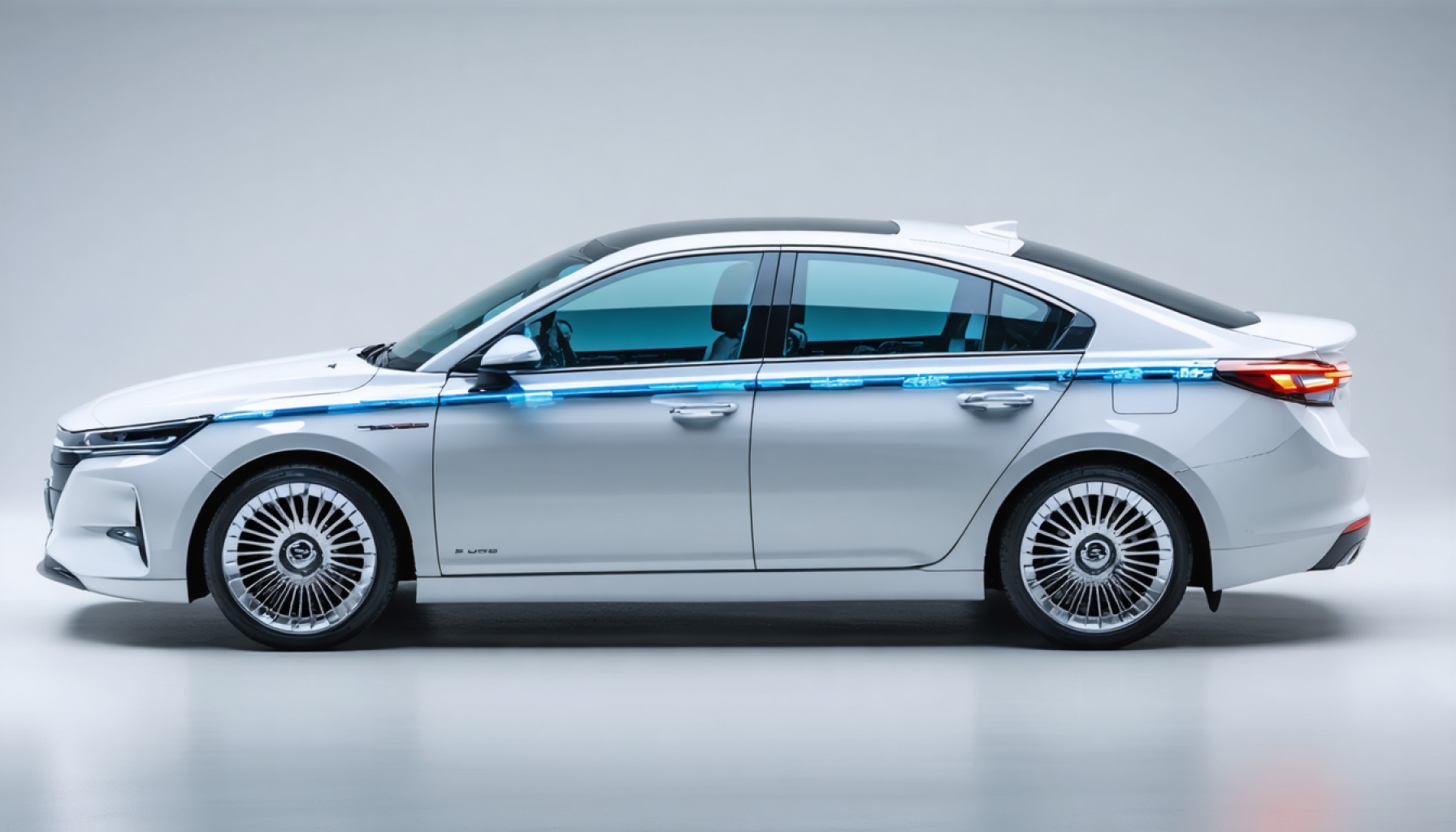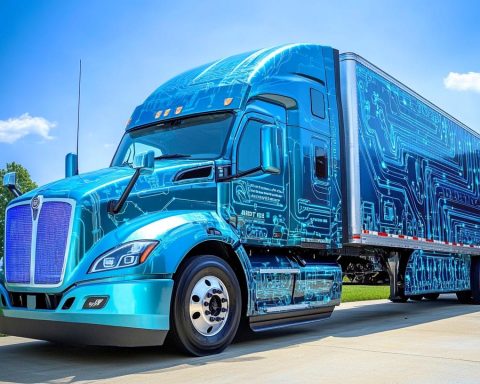- BYD sold over 1 million electric and plug-in hybrid vehicles in the first quarter of 2025, underscoring its leading role in the electric vehicle (EV) revolution.
- The company achieved a 110% year-on-year increase in overseas sales, exporting over 206,000 units, driven by adaptable market strategies.
- Diverse offerings, including the affordable Seagull in China and the luxurious Yangwang U7 with a 447-mile range, highlight BYD’s innovative lineup.
- BYD plans to expand in Europe with new models, potentially doubling sales to 186,000 units in the region this year.
- Having outsold Honda and Nissan in 2024, BYD aims for 5.5 million vehicle sales in 2025, with a significant focus on growing overseas EV sales.
- BYD exemplifies transformation in the auto industry, positioning itself as a leader in the global shift towards sustainable transportation.
This year, the whisper of electric motors from the Chinese auto empire BYD echoes far beyond the Great Wall. With a relentless momentum that would impress any Formula 1 team, BYD roared into 2025 by selling over one million electric and plug-in hybrid vehicles in the first quarter alone. Such numbers speak to a company not merely participating in the electric revolution but orchestrating it.
The secret to BYD’s success lies in its ability to adapt and conquer new markets. Just as rivers carve their paths through valleys, BYD’s vehicles are finding their way into driveways across the globe. In March, exports hit an unprecedented 72,723 units, taking the year’s overseas sales to over 206,000—a staggering 110% increase from the previous year. This performance underscores BYD’s ambition and the global appetite for its electric offerings.
The heartbeat of BYD’s triumph is a diverse lineup. This includes the budget-friendly Seagull, a hit in China for its unbeatable price point, and its international counterpart, the Dolphin Mini, making waves in Mexico. Meanwhile, the Yangwang U7, a new ultra-luxury sedan, dazzles with four electric motors and a prowess to sprint from 0 to 62 mph in just 2.9 seconds. BYD’s innovation isn’t confined to speed; the U7 also boasts an impressive 447-mile range, suggesting that it’s designed not just for the fast lane but for the long journey.
Such audacity is mirrored in its European strategy. BYD plans to introduce models like the Sealion 7 midsize SUV and the cost-effective Seagull under the moniker “Dolphin Surf”. Analysts predict BYD’s sales in Europe could double to 186,000 units this year, and projections envision further expansion with sales potentially reaching 400,000 by 2029.
The pace at which BYD accelerates into global markets might well see it overtaking industry veterans. Having outsold both Honda and Nissan in 2024, BYD’s goal of selling 5.5 million vehicles in 2025 might see it inching past Ford. Moreover, the company has set its sights on selling over 800,000 EVs overseas this year—a goal that speaks to more than ambition; it speaks to realization and recognition of electric dreams.
BYD’s story isn’t just about numbers or market shares; it is a narrative of transformation within the auto industry. With its dynamic approach and tailored products for different geographies, BYD is sculpting a global electric ecosystem. As the world turns its gaze to renewable energy and sustainable practices, BYD stands as a beacon of how innovation and dedication can truly charge the future. The rapid ascent of BYD offers a resonant takeaway: in a world increasingly dominated by electrics, those who drive change are those who will lead the road ahead.
BYD: The Unstoppable Electric Revolution You Can’t Ignore
Introduction
BYD, the Chinese automotive giant, is making waves in the global electric vehicle (EV) market with its impressive sales figures and expansive reach. As the market leans increasingly towards electrification, BYD’s strategies and offerings position it as a formidable competitor on the international stage. Let’s delve into additional insights and trends around BYD’s remarkable journey and future prospects.
How BYD Is Outpacing Competitors
1. Strategic Market Penetration: BYD’s success hinges on its calculated approach to entering new markets. For instance, targeting key international markets such as Europe and Mexico has allowed BYD to increase its global footprint effectively.
2. Diverse Vehicle Lineup: Leveraging a wide array of vehicles that cater to different segments—from the cost-effective Seagull to the luxury Yangwang U7—BYD ensures it meets varied consumer needs, providing options that range from budget-conscious to high-end.
3. Focus on Innovation and Range: The Yangwang U7’s staggering 447-mile range is a testament to BYD’s commitment to performance and sustainability. Coupled with rapid acceleration and advanced technology, such vehicles showcase BYD’s innovation edge.
4. Sustainable Manufacturing Practices: BYD emphasizes sustainable production, integrating clean energy sources into its manufacturing processes to minimize carbon emissions, thus aligning with global sustainability goals.
Market Trends and Industry Forecasts
– Global EV Demand Surge: With increasing governmental incentives and a shift toward sustainable transportation, the global EV market is projected to grow significantly. BYD is well-positioned to capitalize on these trends by expanding its vehicle range and technological advancements.
– European Expansion: BYD’s plans for boosting sales in Europe signify a strategic push into markets anticipating a shift towards electric mobility. European markets are likely to become key battlegrounds for EV manufacturers, with sales projected to potentially reach 400,000 units by 2029.
Controversies and Limitations
– Infrastructure Challenges: One major limitation in expanding EV adoption is the inadequate charging infrastructure in many parts of the world, which could impact BYD’s ability to sustain growth in certain regions.
– Competition from Established Brands: Despite BYD’s momentum, established auto brands like Tesla, Volkswagen, and emerging startups present formidable competition, necessitating continuous innovation and strategic pricing.
Pros & Cons Overview
– Pros:
– Diverse EV lineup catering to multiple segments.
– Strong international growth and revenue increase.
– Sustainable and innovative manufacturing processes.
– Cons:
– Challenges with EV adoption in regions with poor infrastructure.
– Increasing competition in saturated markets.
Actionable Recommendations
– For consumers considering an EV, exploring BYD’s range offers a combination of affordability and advanced features, making it a strong contender for your next vehicle purchase.
– Environmental enthusiasts should take note of BYD’s commitment to sustainable manufacturing when making purchasing decisions.
Conclusion
BYD’s rapid ascent in the electric vehicle arena underscores a growing narrative in the auto industry: adaptability and innovation are key to leading the pack. As environmental concerns push the needle towards electric, BYD is poised to be at the forefront of this transformation. For further insights and updates on BYD’s latest developments, visit BYD’s official website.














